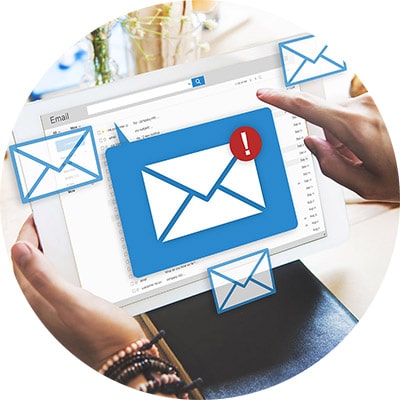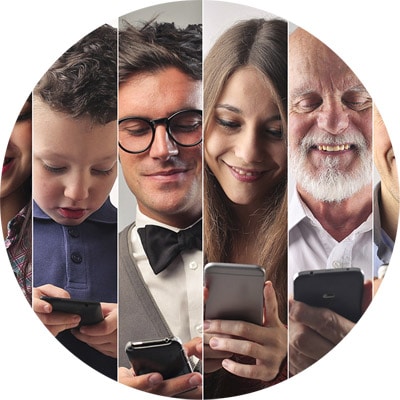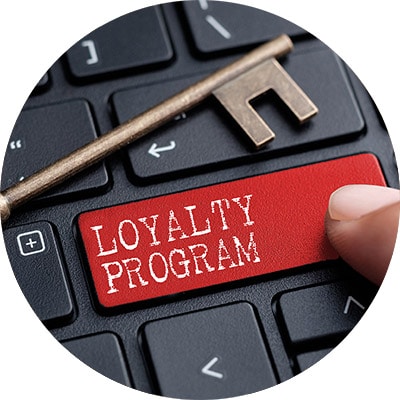3 ways to boost your B2C digital marketing strategy
On the other hand, B2C customers can be frugal or impulsive. They are more apt to making their purchasing decisions emotionally rather than logically. While B2B clients will want to see immediate value or return on investment (ROI) from their purchases, B2C customers may be more interested in gamification, entertainment, and VIP perks offered as exciting parts of the buyer’s journey, though a value-rich deal certainly adds to the fun.
While it may seem to be easier marketing to consumers compared to businesses, B2C strategies have a tendency to get stale quickly and need constant optimization. If your website traffic is stagnating, your email list isn’t growing, or your number of repeat eCommerce transactions fails to increase month over month, it is probably time to finetune your B2C digital marketing strategy. To improve your strategy’s performance, you can simplify the decision-making process to help consumers overcome mental fatigue and cut through the clutter; focus on taking transactional relationships to the next level by cultivating a better brand experience; and drive better brand awareness to reel in a stream of new prospects.
Simplify Decision-Making.
Cornell University found adults make about 35,000 conscious decisions per day, including over 226 decisions related to food.
Decision-making fatigue is a state of low willpower caused by investing effort into making too many choices. Consumers end up avoiding decisions altogether or making spontaneous decisions in a superficial manner, which can ultimately affect purchase conversion.
To combat this, marketers can help shoppers cut through the clutter by offering relevant product information through multiple mediums. For example, Shopkick—a top-performing omnichannel loyalty mobile app—allows partnering retailers and brands to interact with users in different ways all along the path to purchase.
- Need Recognition — Know what pain points your consumers face. Develop content based on these problems, pitching how your products or services make the perfect solution.
- Information Search — Build comparison charts with popular alternatives to show where you differ. Create videos showcasing your products or services in action compared to competitors.
- Remove Obstacles — Aim to alleviate or remove obstacles to purchasing, such as time, money, convenience, return and exchange policies, brand loyalty, or unfavorable brand perceptions.
- Simplify Selection — If possible, reduce the number of product or service choices offered through consolidating, rotating offers seasonally, or showing personalized option menus.
- Final Push — Make sure your website is optimized with basic product, price, and location information. Product samples, coupons, or rewards provide an added incentive to try.
Go Beyond Single Transactions.
Transactional marketing focuses on increasing efficiency and volume at the point-of-sale through four P’s: product, pricing, placement, and promotion. The emphasis is more on alleviating obstacles related to selling rather than cultivating a long-term relationship with prospects. Once a transaction is completed, there is typically no further interaction with the customer.
To boost your B2C marketing efforts, focus on keeping the conversation going with relationship marketing tactics like sending out post-sale surveys and follow-up emails, personalizing social ads using a CRM system that tracks consumer behavior, and launching a loyalty program with an easy-to-use app.
If you’re debating whether this is the best strategy or not, consider this: Reichheld & Schefter found relational marketing increases customer retention rates by 5% and increases profits from 25% to 95%.
Cultivating Long-Term Customer Loyalty in B2C Digital Marketing Strategies

Nurture Relationships With Email.
Brands make an average ROI of $42 for every dollar spent on email marketing, making it one of the most cost-effective ways to nurture a B2C relationship.
Email is also an easy-to-sell “buy-in.” Consumers freely give their email because they want access to a tangible confirmation regarding their purchase, but it also becomes an open invitation to helpful, relevant communications in the future. (after receiving consumer permission, of course!)
Consumers also subscribe for:
- Discounts and promotions
- News and announcements
- Educational content
Setting up “drip” campaigns triggered by specific consumer behaviors is a great way to minimize the risk of users unsubscribing. For instance, after a person visits your product page, your email campaign might include a message reinforcing benefits and features, followed by a discount offer to sweeten the deal.
Another example—after someone makes an initial purchase, your email campaign may start with a welcome letter with a little more information about your company values and approach to customer service, followed by a “helpful tips” email that ensures customers get the most out of their purchase, followed by an upsell email featuring commonly purchased accessories. Seek to establish a human connection with your emails to keep subscribers for life.

Personalize for a Great Experience.
Today’s consumers expect companies to truly “know” them, despite marketing at-scale. One-to-one marketing is essential to delivering a memorable buyer experience.
Here are a few simple marketing ideas:
- Have humans (not bots) email.
- Use automation tools.
- Develop marketing personas.
- Segment email lists by persona at sign-up.
- Create persona-driven content.
- Build targeted landing pages.
- Send location-based texts.
- Craft identity-based campaigns.
Content is king when it comes to personalization. Use your content across platforms—whether it’s a dedicated landing page, a text message promotion, an email, a video, a social media post, or an app’s lookbook—to connect with unique individuals. According to Monetate, 40% of consumers buy more from retailers who personalize the shopping experience across channels.
You should consider using comprehensive CRM software by HubSpot, Salesforce, SEMRush, or Google 360. The right CRM system can level up your business and prioritize marketing activities. Companies that use CRM software see sales increases up to 29%, 34% improved productivity, and a 40% boost in forecasting accuracy.

Launch a Loyalty Program.
The Edelman Brandshare report found 87% of consumers want relationships with brands, but just 17% believe brands make an honest effort to establish such ties. Since 80% of your future profits will come from the top 20% of your buyers, it makes sense to prioritize them.
A loyalty program is an ideal way to:
- Treat VIPs to exclusive offers.
- Solicit customer feedback.
- Keep buyers up-to-date.
- Track and incentivize behavior.
While launching your own loyalty program is beneficial, partnering with a third-party loyalty app can be easier and more affordable, not to mention more convenient for shoppers experiencing loyalty fatigue and/or juggling several loyalty programs. Shopkick is a mobile app that offers “kicks” (reward points) when consumers interact with partnering brands and retailers by various means.
Kicks can be earned by:
- Engaging with branded in-app content like videos and lookbooks.
- Walking into partnering retail stores.
- Seeking out featured products in-store, and physically interacting by scanning product barcodes with a mobile device.
- Making in-store purchases and submitting receipts.
- Making online purchases.
When eBay partnered with Shopkick, they were able to increase their app install rate by 6%, boost their new audience participation rate 62%, and achieve an 18% repeat-purchase rate.
Best of all, Shopkick rewards with points instead of immediate discounts, so there is no need to worry about diluting profit margins or devaluing your brand.
Drive Brand Awareness.
Awareness is the first step in reaching a bigger potential buyer market. Once you have a person’s attention, you have a chance at converting, forming a lasting relationship, and encouraging repeat purchases.
Studies have found that consumers show an overwhelming preference for brands with high awareness despite quality and price differentials, proving brand awareness to be a dominant consideration factor when shoppers are faced with a choice among various brands. Furthermore, brands in the initial consideration set can be up to 3x more likely to be purchased when compared to brands that are not in it.
You don’t necessarily need to reinvent the wheel by overhauling your entire B2C digital marketing strategy; it’s likely you can see big results by turbocharging your existing strategy through new tactics. By simplifying your message, cultivating stronger relationships, and generating more effective brand awareness, you’ll have the tools in place to powerfully compete in the saturated marketplace.
Shopkick is an omnichannel loyalty rewards app that can effectively boost your B2C digital marketing strategy. Our partners use Shopkick to increase sales, form strong relationships with repeat buyers, and expand their markets. Contact us to start your first campaign.


